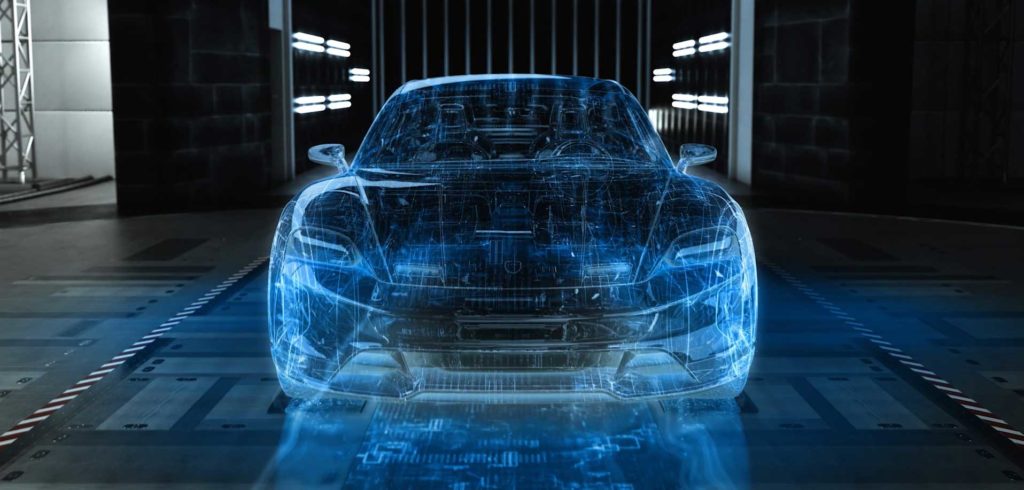The Cross Turismo will be Porsche’s second electric-only vehicle after the Taycan, which is scheduled for launch at the end of 2019.
To develop the car, engineers are using the most cutting-edge digital development methods. Virtual prototypes are being used to test systems and components at an early stage in the process. As a result, the development process for the new Taycan Cross Turismo will be quicker and more efficient. These virtual vehicles have completed more than 10 million digital kilometers in total.
Digitization is opening up a world of new possibilities for engineers at Porsche. At present, computers are used to design a new vehicle’s body, drivetrain, chassis and electronics. During the development of Porsche’s first-ever electric vehicles, a method known as network simulation has being used that enables engineers to check factors such as interdisciplinary coordination of the energy management system in an electric car.
This has enabled design engineers to use a simulator to drive a Taycan around the Nordschleife track at the Nürburgring seven months prior to availability of a real-life prototype. As a result, they have been able to test and assess track performance without needing an actual vehicle. During this process they focused particularly on electrical energy management, which will play an important role in achieving the team’s targeted sub-eight-minute track time on the Nordschleife.
Porsche also uses hardware-in-the-loop simulation. When developing the Sport Turismo model in the Panamera line, Porsche did not need to build any construction-stage vehicles for verification purposes.
Dr Robert Meier, Taycan project manager, said, “As well as being able to simulate individual assemblies and functions, we can also fine-tune the vehicle as a whole at a much earlier stage and in a more precise way.”


